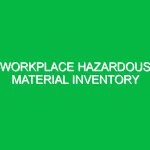Introduction
In the realm of scientific research and experimentation, the safe use of laboratory equipment cannot be overstated. It forms the bedrock of a secure working environment, safeguarding not only the health and safety of laboratory personnel but also ensuring the integrity of research outcomes. Laboratory equipment, ranging from simple glassware to complex machinery, presents various hazards that can lead to accidents, injuries, or even catastrophic failures if not handled correctly. Understanding the principles of safe equipment use is therefore essential for anyone working in a laboratory setting.
Understanding the Hazards and Risks
Every piece of laboratory equipment carries inherent risks that can threaten the safety of users. These risks can be broadly categorized into physical hazards, chemical hazards, biological hazards, and ergonomic risks.
Physical Hazards
Physical hazards are often the most immediate threats encountered in laboratories. Equipment like centrifuges, autoclaves, and high-speed mixers can pose risks such as:
- Mechanical Failure: Equipment malfunction can result in flying debris or splashes of hazardous materials.
- Electrical Hazards: Faulty wiring or improper grounding can lead to electric shocks.
- Heat Burns: Devices that generate heat, such as hot plates and Bunsen burners, can cause severe burns if mishandled.
Chemical Hazards
Chemical hazards arise from the use of various reagents and substances in laboratory settings. Potential risks include:
- Corrosive Materials: Acids and bases can cause skin burns or eye damage upon contact.
- Volatile Substances: Chemicals that emit vapors can be flammable or toxic when inhaled.
- Reactivity: Some chemicals can react violently when mixed, leading to explosions or release of toxic gases.
Biological Hazards
For laboratories that deal with biological materials, there are additional hazards to consider:
- Pathogens: Exposure to bacteria, viruses, or fungi can lead to infections.
- Allergens: Certain biological materials can trigger allergic reactions in sensitive individuals.
Ergonomic Risks
Ergonomic risks often involve repetitive tasks, awkward postures, or prolonged standing that can lead to musculoskeletal disorders. Poorly designed workstations can contribute significantly to these risks.
Safety Precautions and Best Practices
To mitigate the hazards associated with laboratory equipment, implementing robust safety precautions and best practices is essential. Here are some actionable strategies:
Personal Protective Equipment (PPE)
Wearing appropriate personal protective equipment is the first line of defense against laboratory hazards. PPE includes:
- Lab Coats: Protect against spills and splashes.
- Safety Goggles: Shield eyes from chemical splashes and flying debris.
- Gloves: Use chemical-resistant gloves appropriate for the substances handled.
- Face Shields: Provide additional protection when working with hazardous materials.
Proper Training and Procedures
Comprehensive training on the proper use of laboratory equipment is crucial. Every lab member should understand:
- How to correctly set up and operate equipment.
- Emergency shut-off procedures.
- Proper cleaning and maintenance of equipment.
Regular refresher courses can keep safety protocols top of mind.
Regular Maintenance and Inspections
Routine maintenance of laboratory equipment can prevent mechanical failures. Establish a schedule for:
- Calibrating instruments.
- Inspecting electrical connections.
- Cleaning and decontaminating equipment.
Documenting these activities helps ensure accountability and compliance with safety standards.
Safe Chemical Handling Practices
Understanding the properties of chemicals is vital for safe handling. Always:
- Label all containers clearly with the contents and hazard warnings.
- Use fume hoods when working with volatile substances.
- Store chemicals according to their compatibility to avoid dangerous reactions.
Emergency Preparedness
No matter how well-prepared a laboratory may be, accidents can happen. Being ready for emergencies is crucial. Ensure that:
- Emergency exits are marked and accessible.
- Safety showers and eyewash stations are in working order and easily accessible.
- First aid kits are stocked and known to all personnel.
Conduct regular drills to ensure everyone knows their role in an emergency.
Regulations and Standards
The safe use of laboratory equipment is governed by various regulations and standards, which play a pivotal role in ensuring safety in the lab environment. In the United States, organizations such as the Occupational Safety and Health Administration (OSHA) set forth regulations that laboratories must follow to protect employees. These regulations include:
- OSHA Lab Standard (29 CFR 1910.1450): Focuses on the safety of laboratory workers.
- American National Standards Institute (ANSI): Provides guidelines for lab safety and equipment use.
- National Fire Protection Association (NFPA): Offers regulations relating to fire safety in laboratories.
Compliance with these standards is essential for fostering a safe laboratory environment and minimizing risks.
Conclusion
The safe use of laboratory equipment is a multifaceted responsibility that encompasses a wide range of practices and precautions. By understanding the hazards associated with laboratory equipment and implementing comprehensive safety measures, laboratory personnel can create a safer, more efficient working environment. Investing time in training, maintenance, and adherence to safety regulations not only protects individuals but also upholds the integrity of scientific research. Ultimately, a commitment to safety in the lab is a commitment to the advancement of knowledge and innovation.


